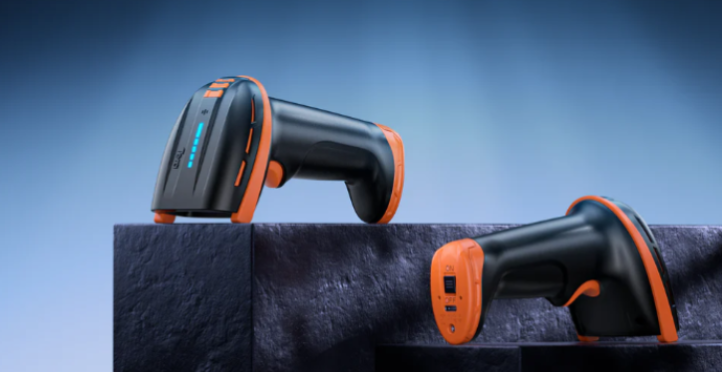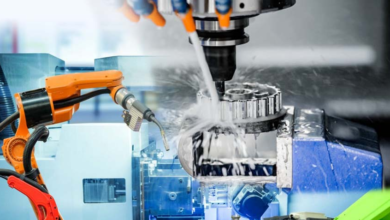Advancements in Android Barcode Scanners Revolutionizing Retail Operations

Barcode technology is a fundamental component of modern retail, streamlining operations from the warehouse to the sales floor. In recent years, the adoption of Android-based barcode scanners has marked a significant shift. Their flexibility, familiar interface, and cost-effectiveness are driving this change, enabling businesses to enhance efficiency and accuracy in an increasingly digital marketplace.
As retailers navigate consumer demands for speed and transparency, the technology embedded within these devices continues to evolve. Recent advancements are not just improving scanning speed; they are transforming how retailers manage inventory, engage with customers, and optimize their entire supply chain.
The Rise of Android in Retail Scanning Technology
The move toward Android operating systems for barcode scanners offers substantial benefits for retail operations. The familiar user interface reduces the learning curve for employees, minimizing training time and costs. This adaptability allows businesses to integrate scanners seamlessly with existing Enterprise Resource Planning (ERP) and mobile point-of-sale (mPOS) systems.
This integration is crucial for omnichannel retail strategies. It allows for a unified view of inventory across both online and physical stores. Android’s open-source nature facilitates the development of custom applications, empowering retailers to tailor scanning solutions to their specific operational needs, from warehouse management to in-store customer assistance.
See also: Why Transaction Monitoring Is Critical for Fintech and Banks
Key Technological Innovations
The latest generation of Android barcode scanners incorporates several transformative technologies. These advancements are pushing the boundaries of what these devices can achieve, making them smarter and more capable tools for the modern retail environment.
Integration of AI and Machine Learning
Artificial intelligence (AI) and machine learning (ML) are making scanners more intelligent. These technologies enable devices to accurately read barcodes that are damaged, poorly printed, or obscured. AI-driven algorithms can interpret incomplete data, reducing scanning failures and the need for manual entry.
Beyond simple decoding, AI provides predictive analytics. By analyzing scan data in real-time, these systems can help with demand forecasting and intelligent inventory management. This allows retailers to make proactive decisions, optimizing stock levels and reducing waste.
Advanced Imaging and Scanning Capabilities
There has been a significant shift from traditional laser scanners to advanced imaging technology. Modern devices utilize high-resolution cameras and sophisticated imagers to read both 1D and 2D barcodes, such as QR codes, with greater speed and precision.
This enhanced capability allows for scanning from various surfaces, including smartphone screens. This is essential for processing mobile coupons, digital loyalty cards, and online order confirmations. The ability to capture data from any medium makes the checkout process faster and more versatile.
Enhanced Connectivity and Cloud Integration
Cloud integration has become a standard feature, enabling real-time data synchronization across all devices and platforms. This ensures that inventory levels, pricing, and product information are consistently up-to-date, providing a single source of truth for the entire organization.
Technologies like Near-Field Communication (NFC) and the growing adoption of 5G networks further enhance connectivity. Faster data transfer and lower latency unlock new potential for real-time tracking and instant data analysis. Enterprise Mobility Management (EMM) solutions, often embedded in the Android platform, allow IT teams to manage, secure, and update devices remotely.
The Evolution Toward Rugged and Multifunctional Devices
Retail environments, from warehouses to store floors, can be demanding. This has driven the development of rugged Android scanners built to withstand drops, spills, and continuous use. Manufacturers are prioritizing durable construction and ergonomic designs to ensure comfort and reliability for employees.
Furthermore, the trend is moving towards creating a single, multifunctional tool. Instead of just scanning, these devices combine multiple functions into a single piece of hardware. This evolution has led to the rise of barcode android scanners, which integrate powerful processing, advanced scanning, and robust mobile communication capabilities to handle a wide range of operational tasks efficiently.
Navigating the Challenges
Despite the numerous benefits, the adoption of advanced Android scanners is not without challenges. Cybersecurity is a primary concern, as connected devices can be vulnerable to data breaches. Businesses must implement strong security protocols and device management systems to protect sensitive information.
Ultimately, the trajectory of Android barcode scanners in retail is one of continuous innovation. By integrating AI, advanced imaging, and cloud connectivity, these devices are evolving from simple data capture tools into strategic assets. They empower retailers to build more efficient, accurate, and customer-focused operations, setting a new standard for the industry.





